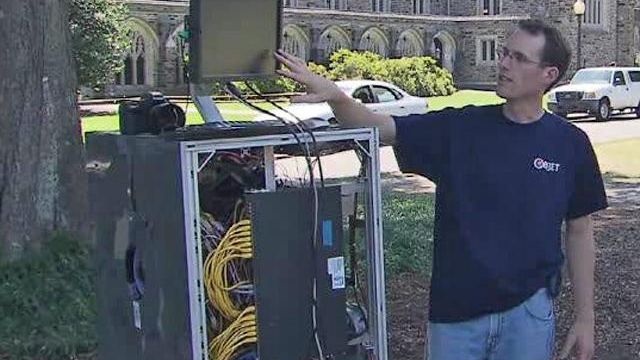Duke scientists working on gigapixel super-camera
Scientists at Duke University are working on a digital camera like no other.
Posted — UpdatedHow about 1,000 megapixels – or a gigapixel?
That's how much data the DARPA Aware 2 – a new super-powered camera under development at Duke University – can handle.
The technology, funded by a federal defense grant and developed in partnership with scientists at the University of Arizona and the University of California at San Diego, uses 98 tiny digital cameras in a single device to capture one image with a spherical lens.
The prototype camera's resolution is 10 times better than 20/20 vision and up to 100 times better than a photo taken with a normal digital camera.
It has the potential to capture up to 50 gigapixels, or 50,000 megapixels, of data. Most cameras are capable of taking photos with sizes ranging from 8 to 40 megapixels.
The biggest challenge for the scientists working on the project, team leader David Brady says, is making the camera smaller and user friendly.
Currently, it is 2.5 square feet and 20 inches deep. Electronics and processors to put together the final image make up 97 percent of the components.
The next generation of this camera is expected to be four times smaller.
• Credits
Copyright 2024 by Capitol Broadcasting Company. All rights reserved. This material may not be published, broadcast, rewritten or redistributed.





